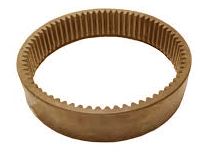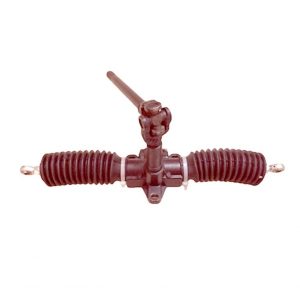Product Description
Product Description
Detailed description of Crankshaft belt pulley for BMW E46 E61 E81
1)OE NO.: 11237787304,11237790921,11237793882,11237801977
2)Material:Steel
3)Color:Black
4)Certificate:ROHS,SAE,ISO,DOT,SGS,ECE/ADR Approved
5)Application:Used for E46 E61 E81
6)Good quality with reasonable price and fast delivery
7)Payment:T/T,Paypal or Western Union;
30% advance by T/T before producing and 70% balance by T/T before shipment.
8)Delivery time: 3-5 days for sample order or small order;10-15 days after receiving deposit for big order.
9)Package: Neutral packing.
10)MOQ: 100pcs
Packaging & Shipping
1. Packing:Neutral packing or meet customer’s demand
2. Lead time: 3-5 days for sample order; 10-15 days for formal order
3. Shipping freight are delivered under your requests
4. Export sea port: HangZhou,China
5. Discounts are offered based on order quantities
6. Shipping: By Express (EMS, DHL, FedEx,UPS, TNT), By Air or By sea
Our Services
1)12 months warranty
2)Samples can be supplied
3)We can reply your inquiry within 24 hours
4)Very good after-sale service
Company Information
We are a professional supplier of car led lights,bus led lamps,trailer led lamps,semi trailer led lamps,truck led lamps,engineering & construction machine led lamps,forklift led lights for years in China.
If you are interested in our products, please feel free to contact with us at any time.
Our products are exported to North America,Australia,Middle East,Africa,Southeast of Asia,South America and Europe.
We are positive to enlarge our markets in other countries.
FAQ
Q1. How many years have your company deal in autoparts?
A: Our production team has more than 10 years of experience in this industry.
Q2. What is your company major products?
A: Our main products are car parts,truck parts and trailer parts.
Q3. Are you a factory or trading company?
A: We are a trading company but we have many joint venture factories.
Q4. What are your guaranty ?
A: 12 months warranty
Q5. Is your company willing to be glad if I am your agent ?
A: Yes,very glad if you can be our our agent in your market.
Q6. What would you do if your product quality is out of the question
A: We will take full responsibility for any discrepancy and defection on our goods.
| Application: | Used for BMW E46 E61 E81 |
|---|---|
| Certification: | CE, RoHS, ISO |
| Warranty: | 12 Months |
| Material: | Metal |
| Condition: | Brand New |
| Weight: | 3kg |
| Samples: |
US$ 20/Piece
1 Piece(Min.Order) | |
|---|
| Customization: |
Available
| Customized Request |
|---|
How do multiple pulleys in a block and tackle system work together?
In a block and tackle system, multiple pulleys are used in combination to create a mechanical advantage, allowing for easier lifting of heavy loads. The pulleys in a block and tackle system work together in the following manner:
1. Load Distribution: The weight of the load to be lifted is distributed over multiple strands of rope or cable that pass through the pulleys. This distribution of weight helps in reducing the force required to lift the load.
2. Mechanical Advantage: The mechanical advantage in a block and tackle system is achieved by increasing the number of rope segments that support the load. Each additional pulley increases the number of rope segments, which in turn reduces the amount of force needed to lift the load. The mechanical advantage is equal to the number of segments of rope supporting the load.
3. Tension Distribution: As the load is lifted, the tension in the rope or cable changes. In a block and tackle system, the tension is distributed among the various segments of rope or cable connected to the pulleys. This distribution of tension ensures that the load is lifted evenly and prevents excessive stress on any single rope segment.
4. Rope Arrangement: The pulleys in a block and tackle system are arranged in two sets: the fixed pulleys and the movable pulleys. The fixed pulleys are attached to a fixed point, such as a beam or a ceiling, and do not move. The movable pulleys are attached to the load being lifted and can move freely. The arrangement of the pulleys determines the mechanical advantage and the direction of force required to lift the load.
By combining these principles, multiple pulleys in a block and tackle system allow for the effective lifting of heavy loads with reduced effort. The mechanical advantage provided by the pulleys makes it possible to lift loads that would otherwise be too heavy to lift manually. Block and tackle systems are commonly used in various applications, including construction, rigging, sailing, and theatrical setups.
What role do pulleys play in modern elevators and hoists?
Pulleys play a crucial role in modern elevators and hoists, enabling the smooth and efficient vertical movement of loads. They are integral components of the lifting mechanisms, providing mechanical advantage and facilitating safe and controlled operation. Here’s how pulleys are used in modern elevators and hoists:
1. Lifting Mechanism: In elevators and hoists, pulleys are part of the lifting mechanism that moves the load vertically. They are typically combined with cables, ropes, or belts to create a pulley system. By distributing the load’s weight across multiple lines and changing the direction of the applied force, pulleys make it easier to lift heavy loads. The number and arrangement of pulleys can vary depending on the specific design and requirements of the elevator or hoist.
2. Counterweight Systems: Modern elevators often utilize counterweight systems to offset the weight of the elevator car and reduce the amount of power required for operation. Pulleys play a crucial role in these systems by guiding the cables connected to the counterweight. As the elevator car moves up or down, the counterweight moves in the opposite direction, balancing the load. The pulleys in the counterweight system help distribute the weight and ensure smooth movement.
3. Traction Control: Pulleys are also involved in the traction control mechanism of elevators and hoists. Traction elevators use ropes or belts that pass over a series of pulleys, known as sheaves, to create traction. An electric motor drives the sheaves, causing the ropes or belts to move. By adjusting the rotational movement of the sheaves, the speed and direction of the elevator or hoist can be controlled. The pulleys in the traction control system enable precise and reliable operation.
4. Safety Systems: Pulleys play a crucial role in the safety systems of elevators and hoists. For example, in traction elevator systems, overspeed governors utilize pulleys to detect excessive speed and activate the safety brakes in case of a malfunction. The pulleys in these safety systems help monitor and control the elevator’s speed, ensuring passenger safety.
5. Maintenance and Service: Pulleys in modern elevators and hoists are designed to be durable and require minimal maintenance. They are often equipped with sealed bearings or other lubrication systems to reduce friction and wear. This ensures the longevity and reliability of the pulley systems, minimizing downtime and maintenance costs.
Overall, pulleys are essential components in modern elevators and hoists, enabling vertical movement, providing mechanical advantage, ensuring safety, and facilitating efficient operation. They contribute to the smooth and controlled lifting of loads, making elevators and hoists reliable and indispensable tools in various industries and buildings.
What is a pulley, and how does it function in mechanical systems?
A pulley is a simple machine consisting of a grooved wheel and a rope, cable, or belt that runs along the groove. It is used to transmit force and motion in mechanical systems. Here’s a detailed explanation of how a pulley functions:
1. Mechanical Advantage: The primary function of a pulley is to provide mechanical advantage. By changing the direction of the force applied and distributing it over multiple segments of the rope or belt, a pulley system allows for easier lifting or moving of heavy loads. The mechanical advantage gained depends on the number of pulleys used in the system.
2. Force Transmission: When a force is applied to one end of the rope or belt, it creates tension that causes the pulley to rotate. As the pulley turns, the force is transmitted to the load attached to the other end of the rope or belt. This force transmission allows for the movement and manipulation of objects in mechanical systems.
3. Directional Change: One of the key functions of a pulley is to change the direction of the applied force. By redirecting the force along a different path, a pulley system enables the operator to exert force from a more convenient or advantageous position. This directional change is particularly useful in situations where the force needs to be applied vertically, horizontally, or at an angle.
4. Speed and Torque Conversion: In addition to changing the direction of force, pulleys can also be used to convert speed and torque in mechanical systems. By varying the size of the pulleys or using pulleys of different diameters, the rotational speed and torque can be adjusted according to the requirements of the system. This speed and torque conversion allows for the optimization of power transmission and the matching of different rotational speeds between input and output components.
5. Multiple Pulley Systems: Pulleys can be combined in systems to achieve increased mechanical advantage or to create complex motion patterns. In systems with multiple pulleys, such as block and tackle arrangements, the load is distributed over several segments of rope or belt, further reducing the effort required to lift heavy objects. These systems are often used in cranes, elevators, and other applications where heavy lifting is necessary.
6. Fixed and Movable Pulleys: Pulleys can be categorized as fixed or movable. A fixed pulley is attached to a stationary structure, and its main function is to change the direction of force. A movable pulley, on the other hand, is attached to the load being moved and moves with it. Movable pulleys provide mechanical advantage by reducing the effort required to lift the load.
7. Belt and Rope Pulleys: Pulleys can have different designs depending on the application. Belt pulleys typically have a grooved surface to grip and guide belts, while rope pulleys have a smooth surface to minimize friction and prevent rope wear. The choice between belt and rope pulleys depends on factors such as load requirements, operational environment, and desired efficiency.
Overall, a pulley is a versatile mechanical device that functions as a force multiplier, directional changer, and speed/torque converter in mechanical systems. Its ability to provide mechanical advantage, change force direction, and facilitate complex motion patterns makes it an essential component in various applications, including lifting, transportation, and power transmission.
editor by CX
2023-12-12














